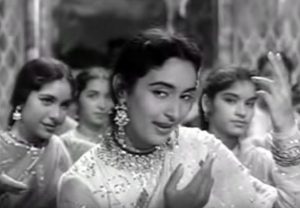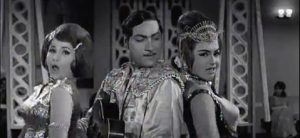Qawwali is a form of Sufi devotional music in the Punjab and Sindh regions of Pakistan. It is part of a musical tradition that draws back to more than 700 years. The musical genre qawwali gained prominence in Bollywood initially through 1950s, especially in Muslim social dramas and grew so much in popularity that its influences became main-stream. Sufi saint Aamir Khusro Dehlavi is credited for introducing the tradition of singing quawwalis. It is a religious experience for both listener and performer: as the lis tener hopes for a spiritual experience of intensity and nearness to go beyond his or her conscious striving. However, in this post I have presented witty, catchy, and romantic qawwalis. The qawwali performer presents treasures of poetries which express and evoke a magical knowledge for the audience. The quawwalis are mix of folk, Hindustani classical and Sufi style of music.
tener hopes for a spiritual experience of intensity and nearness to go beyond his or her conscious striving. However, in this post I have presented witty, catchy, and romantic qawwalis. The qawwali performer presents treasures of poetries which express and evoke a magical knowledge for the audience. The quawwalis are mix of folk, Hindustani classical and Sufi style of music.
Why people go to theatre to watch qawwalis? Sometimes viewers just go to watch the qawwali numbers and come out of the theatre. With just few instruments, few singers or a single singer qawwali creates a complex stream of synchronised hand-clapping; a qawwali group can produce some of the most ecstatic sounds, which memorizes the crowd. The rhythm is full of exuberance of vocals, steadily repeated, mantra-like chanting pattern. There is spontaneity in the qawwali. One needs to have an ear to listen and understand this genre of music.
Qawwalis give meaningful rendition to the performance which is full of emotions. Its melody also has a great influence on the emotional state of listeners. The qawwali performance usually begins after the evening and lasts all night until the wee hours of morning. The word qawwali means “words” worthy of remembrance, and as such the qawwali traditionally has a devotional aspect in praise of Almighty. We usually see the dholak, table, sarangi, sitar, shehnai and jaltarang accompanying the qawwalis. Although a qaawwali was traditionally sung by men only, as the society progressed, both men and women started enjoying and performing quawwali.
Unlike in Hindustani classical music, while taal and raagaa usage is the same, the quawwali places a greater emphasis on the poetic text and the delivery of its messa ge than on musical aspect. Bollywood has changed the style, presentation and libretto of qawwalis; it has been manifested in many varieties. For instance in the late 50s, 60s, 70s the qawwali became synonymous with a musical debate, almost a verbal battle.
ge than on musical aspect. Bollywood has changed the style, presentation and libretto of qawwalis; it has been manifested in many varieties. For instance in the late 50s, 60s, 70s the qawwali became synonymous with a musical debate, almost a verbal battle.
Here’s our list of Bollywood’s evergreen and greatest qawwalis:
Humen to loot liya milke hoosnwalone
Al Hilal 1958; Singer: Ismail Azad, Music Director: Bulo C. Rani
Na toh carvan ki talash hai
Barsat ki ek raat 1960, Singers: Asha Bhosale, Manna Dey, Sudha Malhotra, Shiv Dayal. Music Director: Roshan
Sharma Ke Yeh kyo pardanashi
Chaudhvin Ka Chand 1960: singers: Shamshad Begum & Asha Bhosale, Music Director: Ravi
Teri mehfil mein quismat ajmane
Mughal-e-Azam 1960: Singers: Shmsahd Begum & Lata Mangeshkar, Music Director: Naushad
Nigahen Milane Ko Jee Chahta Hai
Dil Hi To Hai (1963): Asha Bhosale, Music Director: Roshan
Laga Chunari Me Daag
Dil hi toh hai 1963 , Singer: Manna Dey, Music Director: Roshan
Jaan-e-man ek nazar dekh le
Mere Mehboob 1963, Singers: Lata Mangeshkar& Asha Bhosle, Music Director: Naushad
-
Ae Meri Zoharajabeen, Tuzhe Maloom Nahin
- Film Waqt 1965, Singer: Manna Dey, Music Director: Ravi












































